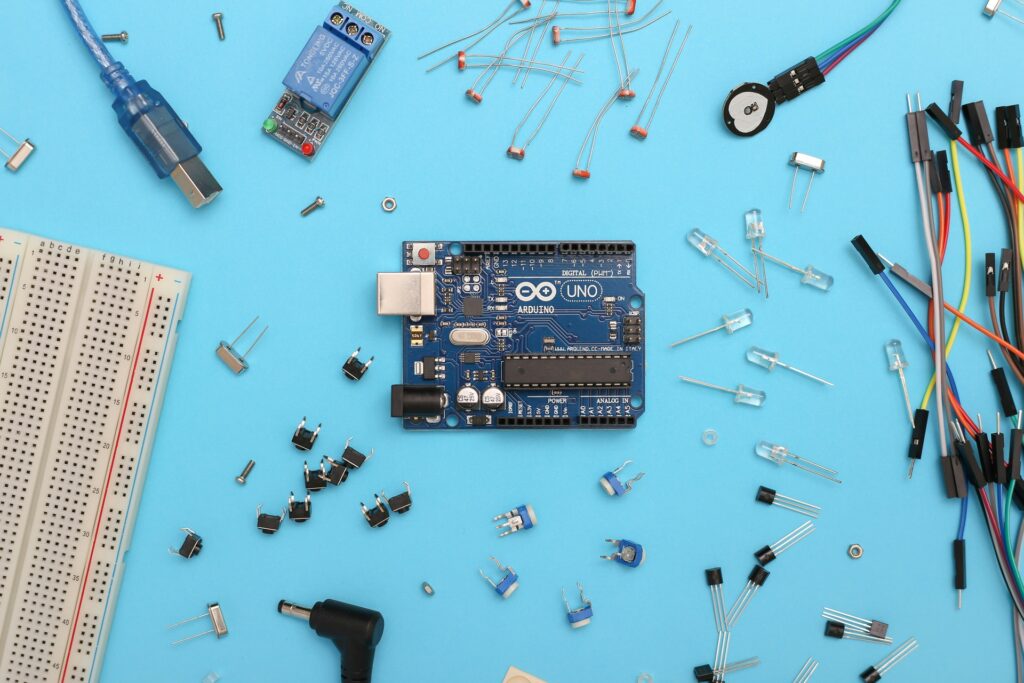Reducing e-waste is an urgent global challenge due to the rapid pace of technology upgrades, which leaves millions of devices discarded each year. This harms ecosystems and poses severe health risks for people, especially in developing regions where improper disposal is typical.
Blockchain technology — known for its secure, transparent record-keeping — offers a promising solution to combat e-waste. By enhancing supply chain transparency and encouraging recycling, blockchain can help track electronic products from creation to disposal. With its potential to hold manufacturers accountable and streamline recycling efforts, blockchain could reduce the growing e-waste problem and promote sustainability across industries.
The E-Waste Epidemic
Electronic waste refers to discarded electronic devices such as smartphones, computers and home appliances. As technology advances rapidly, the volume of e-waste has surged globally, with millions of devices being thrown away yearly. Alarmingly, e-waste accounts for 70% of the world’s toxic waste due to the hazardous materials in many electronics, such as lead, mercury and cadmium.
Improper e-waste disposal often leads to severe environmental issues, including soil contamination and water pollution, as these toxins leach into the ground and water sources. In developing countries, where people dump much of the world’s e-waste, communities face heightened health risks, including respiratory problems and increased cancer rates due to exposure to these toxic substances.
The social impact is equally troubling, as informal recycling operations often rely on unsafe methods that expose workers, including children, to dangerous conditions. Given the growing scale of this problem, urgent solutions are necessary to ensure proper e-waste management,
reduce its environmental footprint and protect vulnerable populations from its harmful effects.
The Role of Blockchain in Reducing E-waste
Blockchain technology is a decentralized ledger that securely records transactions across a network of computers, ensuring each record is transparent and tamper-proof. Because it’s distributed among multiple nodes, altering any single record would require changing the entire chain across all systems — a virtually impossible task — thereby preventing malicious activity.
This inherent security and transparency make blockchain ideal for enhancing traceability throughout the electronic product life cycle, from manufacturing to disposal. Logging every step — sourcing of materials, assembly, sale, usage and recycling — creates an immutability history for each device.
This comprehensive tracking increases manufacturers’ accountability for sourcing responsibly, enables consumers to make informed choices and assists recyclers in efficiently processing e-waste. Blockchain’s ability to provide a secure and transparent trail is pivotal in reducing electronic waste and promoting sustainable practices.
Encouraging Recycling and Circular Economy Models
Blockchain can revolutionize recycling efforts by assigning digital identities to electronic products, making tracking devices from production to disposal easier. Each product’s digital identity would contain information about its components and materials, allowing recyclers to recover valuable resources efficiently. This is crucial, as resource extraction and processing are responsible for nearly half of all global greenhouse gas emissions, contributing significantly to climate change.
Blockchain can support tokenization and reward systems to encourage recycling. Consumers and businesses could earn digital tokens for recycling their electronics, which they can redeem for discounts, products or cryptocurrency. This provides a financial incentive for recycling and fosters a more circular economy, where companies reuse materials rather than discard them, helping to mitigate the environmental impact of e-waste.
Reducing Counterfeit Electronics and Extending Product Life Cycles
Blockchain technology is vital in combating counterfeit electronics, a major contributor to the e-waste crisis, by providing reliable authentication and certification mechanisms. Each electronic product can be given a unique digital identity on the blockchain, allowing consumers and retailers to verify its authenticity and trace its origins, making it harder for counterfeit products to enter the market.
This enhanced transparency builds trust, particularly in second-hand electronics markets, where buyers can use blockchain to confirm the legitimacy and condition of used products. In the U.S., smartphones had an average life span of about 2.67 years in 2023. Still, blockchain’s ability to facilitate repair, refurbishment and resale could help extend the life of devices.
When consumers are confident in the authenticity and history of second-hand products, they encourage more reuse, reducing the need for new production. Extending the life cycle of electronics through these trusted processes can significantly reduce the volume of e-waste, minimizing environmental impact and resource depletion.
Promoting Manufacturer Responsibility and Reducing E-Waste
Blockchain can enforce Extended Producer Responsibility regulations by providing a transparent system to track manufacturer obligations related to e-waste disposal and recycling. By recording every step of an electronic product’s life cycle — from production to disposal — on an immutable ledger, blockchain ensures manufacturers remain accountable for adequately managing e-waste.
This system helps prevent illegal dumping by making it nearly impossible to hide or alter data on the disposal or recycling of electronic products. Blockchain also simplifies the tracking and management of e-waste by providing real-time, accurate information about where products end up, whether they are recycled or improperly discarded.
Governments and regulatory bodies can leverage this technology to monitor compliance with e-waste laws, ensure companies meet recycling targets and are accountable for fulfilling their environmental responsibilities. Blockchain’s ability to create tamper-proof records offers greater transparency. This makes detecting violations and enforcing penalties easier, leading to more effective e-waste management.
The Future of Blockchain in E-Waste Solutions
As blockchain technology evolves, its role in e-waste management can become even more critical, especially as the global e-waste crisis worsens. Experts project that e-waste will reach 82 million tons by 2030, making effective management solutions increasingly urgent.
Blockchain offers a promising path toward a more sustainable and circular approach. It enhances transparency, accountability and efficiency across the electronics life cycle. However, the challenge lies in scaling blockchain solutions globally. It requires significant collaboration between governments, tech companies and consumers.
Governments must create supportive regulatory frameworks, while tech companies should integrate blockchain into their supply chains and recycling systems. Consumers, too, need to participate by responsibly managing their electronic devices. Despite these challenges, blockchain’s long-term potential to foster a circular economy for electronics is immense. Blockchain could transform e-waste management into a more sustainable and environmentally friendly system by enabling better resource tracking, reducing counterfeit products and promoting recycling.
Taking Action to Support Blockchain and E-Waste Reduction
Supporting blockchain initiatives that reduce e-waste is a powerful way to contribute to a more sustainable future. By responsibly recycling electronics and choosing products with transparent, blockchain-tracked life cycles, everyone can help minimize environmental impact and promote smarter consumption.
Recent Stories
Follow Us On
Get the latest tech stories and news in seconds!
Sign up for our newsletter below to receive updates about technology trends




